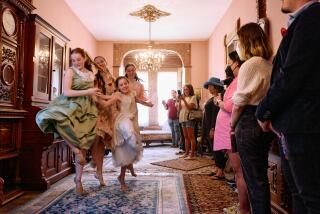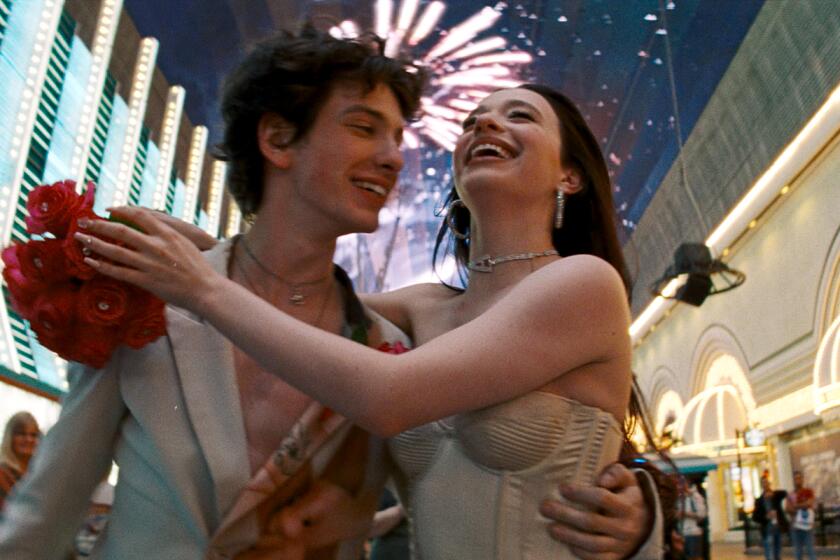‘Swan’ draws the focus back to Cuba
- Share via
HAVANA — Alina Cojocaru and Johan Kobborg of England’s Royal Ballet are not exactly unfamiliar with the starring roles in “Swan Lake.” But the National Ballet of Cuba production is radically different in narrative, tempo and many, many choreographic passages from the version in which they’ve triumphed in London.
As a result, their debut Cuban “Swan Lake,” Thursday at the National Theater here, was one of the most eagerly anticipated performances of the 19th International Havana Ballet Festival -- an ever-changing 10-day event, ending tonight, that throughout this week became increasingly dominated by stellar guests.
Italy’s Carla Fracci and Giuseppe Picone, France’s Charles Jude, the Houston Ballet’s Leticia Oliveira and Zdenek Konvalina (the only U.S. representatives at the festival) -- all danced at various Havana venues. And nearly all joined a large group of National Ballet of Cuba principals and staff watching and cheering Cojocaru and Kobborg.
The remarkable softness, refinement and vulnerability of Cojocaru’s Odette would have inspired acclaim anywhere, and her Odile had so many original touches -- instinctive sharpness covered up with icy delicacy, for instance -- that even a premature finish to the role’s fouette marathon didn’t tarnish her achievement. As Siegfried, Kobborg partnered lovingly, created a deep, persuasive portrayal and danced with suavely modulated virtuosity.
Dating from the 1950s, the much revised Cuban staging, credited to company founder-director Alicia Alonso, features such Soviet-influenced hallmarks as an antic jester and a happy ending. On Thursday, the steps for the exemplary 26-member swan-corps often looked familiar, but the continually evolving circle and wedge formations proved unusual -- and often spectacular.
If classicism flourished at the National Theater, neoclassicism blossomed at the Gran Teatro Garcia Lorca two nights earlier when Houston’s Oliveira and Konvalina stylishly danced George Balanchine’s “Tchaikovsky Pas de Deux.”
One jump-and-catch passage in the piece’s coda misfired, but Oliveira’s precise yet vibrant performance and Konvalina’s easy bravura turned their initially polite reception to genuine enthusiasm. (Neither dancer is an American citizen, and thus neither is subject to the recently tightened U.S. Treasury Department restrictions on travel to and business with Cuba.)
Perhaps the most intimate and involving gift that foreign guests brought to Cuba this week was Renato Zanella’s duet to Mahler, “Adagietto,” danced by Picone and Simona Noja of the Vienna State Opera Ballet. At the Lorca on Wednesday, superbly nuanced acting and partnering by Picone (formerly a firebrand at American Ballet Theatre) and the wide expressive and technical range of Noja created the illusion of a relationship growing before our eyes from a kind of loving imprisonment to mutual trust.
Some guest stars at the festival performed small-scale dance dramas that minimized or utterly jettisoned ballet technique. None of these proved more powerful than Jose Limon’s 1949 modern dance classic “The Moor’s Pavane,” a four-character abstraction of Shakespeare’s “Othello” set to music by Purcell.
On Wednesday at the Lorca, the work was given great emotional force and a sense of ruined grandeur by Jude (a former principal dancer in the Paris Opera Ballet) as Othello, ably supported by members of his Ballet de Bordeaux: Stephanie Roublot, Viviana Franciosi and Jean-Jacques Herment.
Another dance version of Shakespeare turned up on the same program in Luc Bouy’s “Lady Macbeth Sleepwalking,” a feverish vehicle to Richard Strauss for Fracci, an iconic, beloved ballet star of the 1950s and ‘60s. Now 68, she emoted and gesticulated energetically, creating a persuasive mime-portrait of overwhelming fear.
However, her actual dancing consisted of little more than a few turns, in heeled shoes, garnished by the rather frantic technique of Mario Marozzi (Macbeth) and three other men from the Rome Opera Ballet (the witches). The peekaboo black-leather web over Marozzi’s nearly naked body didn’t help.
Because many of the large-scale novelties danced by National Ballet of Cuba during the festival evoked major junctures in ballet history -- conveying impressions of lost works by such fabled choreographers as Gaspero Angiolini, Lev Ivanov and Marius Petipa -- a dance drama that traced the evolution of classical dance from biblical times to the dawn of modernism seemed a perfect fit.
However, Thierry Malandain’s hourlong “Creation” had much more to offer Tuesday at the Teatro Mella. “Man was born dancing,” Malandain wrote in his program notes, and although you could easily spot his deft references to folklore, Baroque court dancing, Romantic ballet, Imperial Russian classicism and modern dance pioneer Loie Fuller, he also supplied compelling vignettes about Adam and Eve and Cain and Abel -- plus gorgeous abstract ensembles glorifying the classical vocabulary.
Malandain used Beethoven’s mighty “Creatures of Prometheus” as his accompaniment, asking the 13 members of his fabulously versatile Ballet Biarritz to match its impact with their muscularity -- but also to deliberately undercut it in passages of duck-walking and other whimsical postmodernisms.
Complex in concept but utterly lucid in performance, “Creation” paid tribute to the dance impulse in all of us, emerging as the most ambitious and innovative import of the festival so far.
More to Read
The biggest entertainment stories
Get our big stories about Hollywood, film, television, music, arts, culture and more right in your inbox as soon as they publish.
You may occasionally receive promotional content from the Los Angeles Times.










